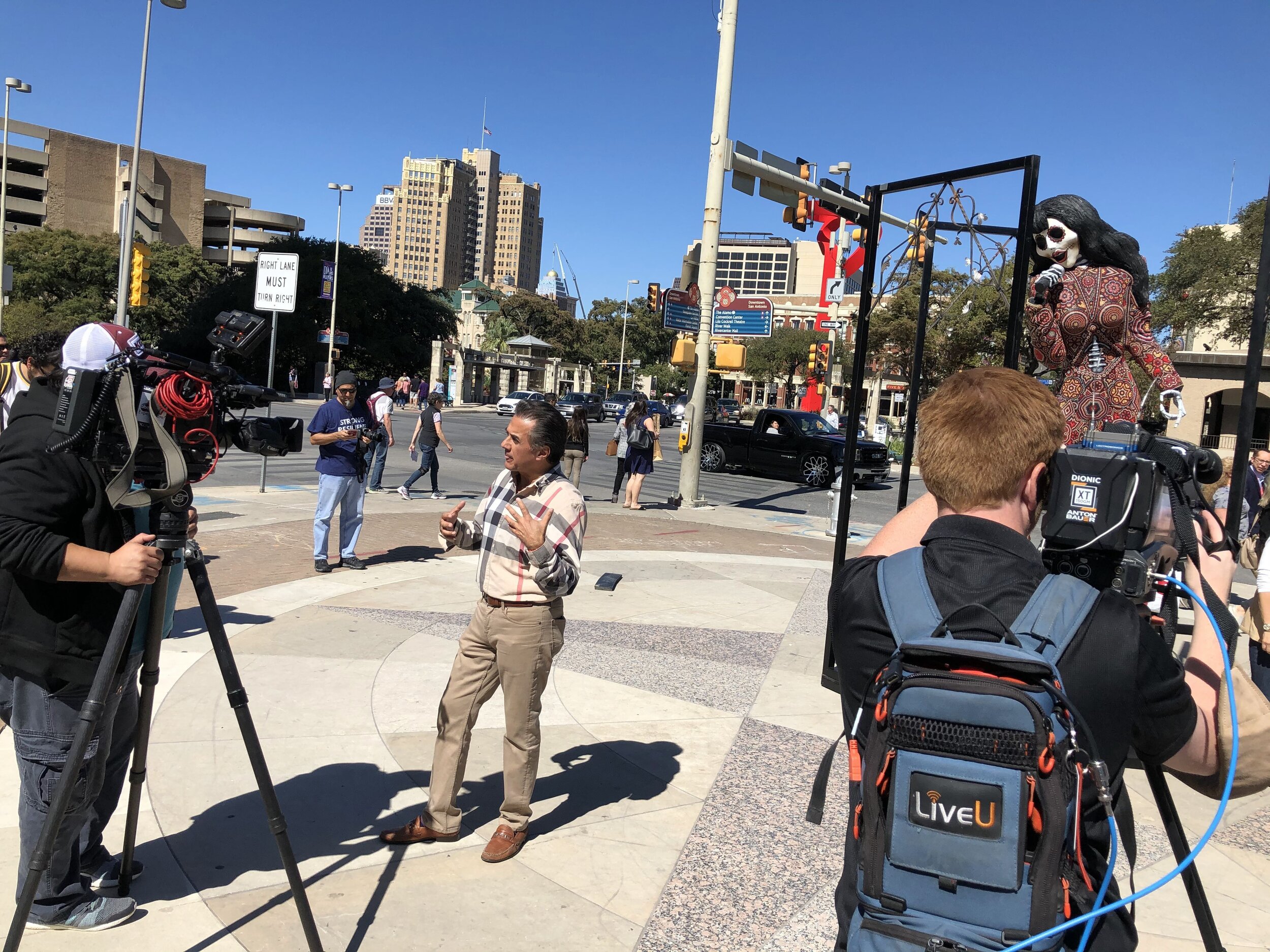Nine Ways to Determine What's Newsworthy
The Meals on Wheels San Antonio team on KABB Fox News 29
Journalists are busy people. That’s always been the case and is now more than ever with the decline of traditional newsrooms. The horror! Especially for a public relations pro like me who loves working with journalists.
I seriously do! They’re the peanut butter to my jelly. A great journalist and a reliable PR source are just better together. And pitching is quite satisfying if you know what reporters are looking for in a story.
Press event coverage of Day of the Dead San Antonio Founder Javier Ruiz Galindo
Throughout my 19-year career specializing in public relations, I have worked with numerous journalists to tell important stories. Pitching story ideas to reporters can seem daunting. For me, I always had a sense of what would make a good story. (It’s more than puppies, babies, and fires.) I get goosebumps when I hear or discover a good angle. I think like a journalist, and question clients like a journalist so they’re not taken off guard or have unrealistic coverage expectations.
This intuition was hard to share with others who wanted media relations advice. Then one day while teaching a Mass Communication college class, I found a list of the criteria that explained it all!
Media & Culture: Mass Communication in a Digital Age did us a great service by listing these eight criteria for newsworthiness so succinctly.
Below are the eight ways that journalists determine what stories may be worth covering. Use these points as criteria on whether you should consider your “news” worthy of a story pitch.
A newsworthy story angle includes at least one (even better 2+) of the following criteria. Updated to include insights from my upcoming book.
Timeliness | Stories that just happened. Don’t miss the window by over-analyzing your pitch. Examples include holiday stories, anniversary stories, or stories on a weather incident that just occurred.
Proximity | Stories about local or nearby events/issues. Find a local connection if needed. Don’t pitch a reporter in another city about something happening in your city that only impacts your city.
Conflict | Stories that seek/share opposing views. Examples include stories about opposing sides of a lawsuit, union strikes, or political conflict.
Prominence | Stories featuring prominent or influential people, such as the president visiting your nonprofit or the local philanthropist donating a life-changing amount of money.
Human Interest | Extraordinary events that happen to ordinary people. Ordinary people who’re extraordinary because of their abilities or behaviors. Ex. the teacher who gave all his students bowties to raise their self-esteem or the child who raised thousands of dollars for the food bank at her birthday party.
Consequence | Stories about issues or events affecting many families and communities, such as the COVID-19 pandemic health crisis or a freeway shutdown.
Usefulness | Stories that have practicality like job fairs or free resources that help people.
Novelty & Deviance | Stories that happen outside the daily routine of life, such as someone who wins the big lottery, a chicken becoming besties with a cat, or mass tragedy stories.
Trends | What’s trending on social media can become a part of TV news, online articles, and even print articles.
Presenting newsworthy tips to nonprofit organizations with Sandra Ibarra from KSAT 12 News at a PRSA San Antonio event
We hope laying out these points will make your evaluation of when you should contact a journalist easier. And we hope it helps our journalists’ phones ring with only newsworthy ideas!
Need help elevating your newsworthiness? Contact Us to schedule a free discovery session and we’ll assess your situation!



